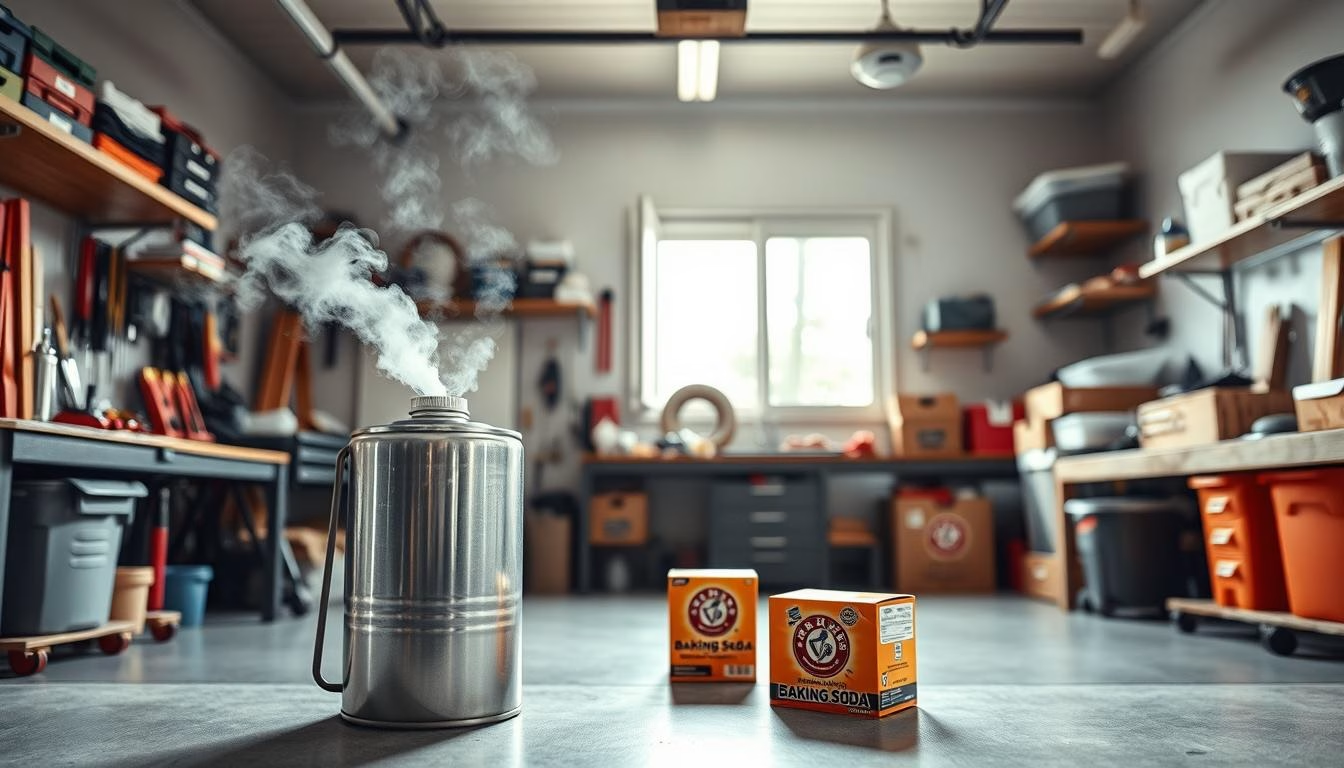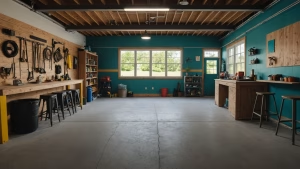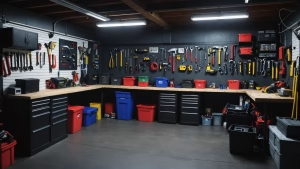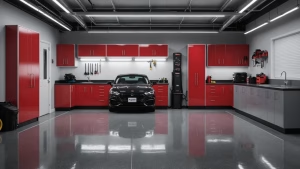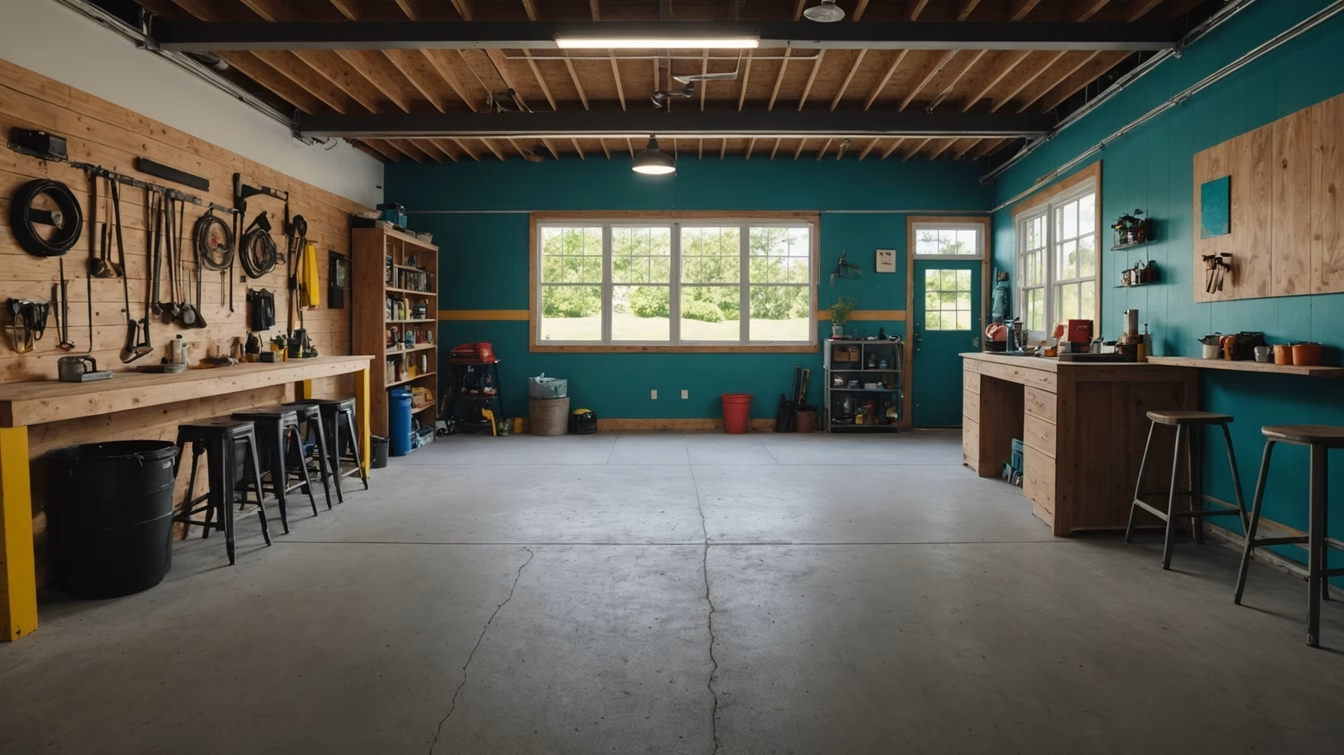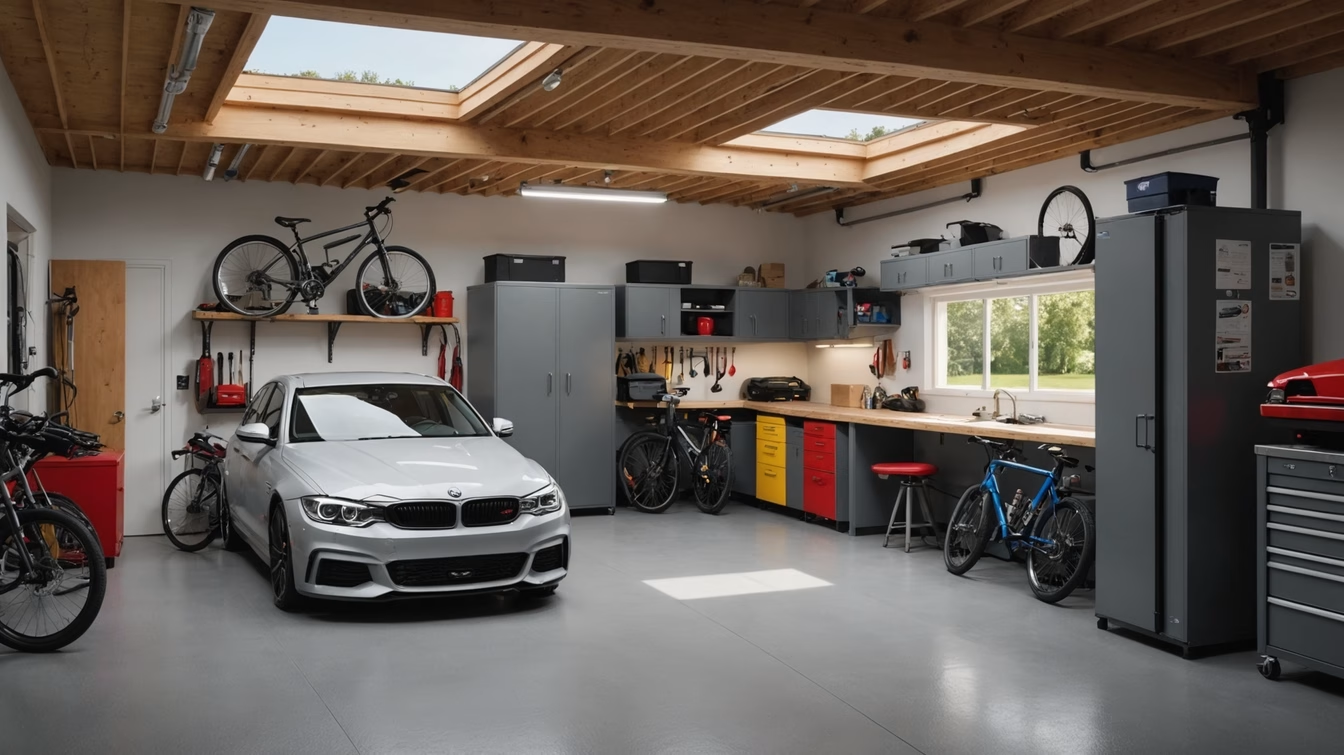Garages often collect flammable fumes and an unpleasant scent when fuel leaks from cars, lawn mowers, or storage cans. Poor airflow and clutter—paints, solvents, oily rags—trap odors and raise safety risks for your home.
This friendly, safety-first guide explains the difference between a minor lingering scent and a persistent odor that signals a hidden source. You will learn a simple flow: find the source, ventilate safely, contain and clean spills, neutralize lingering scents, and prevent a repeat over time.
Immediate ventilation often cuts scent fast. Open the garage door and set up a box fan to move air while you gather basics like baking soda, kitty litter, dish soap, and microfiber rags. We’ll also note safety musts: keep ignition sources away, install smoke and carbon monoxide detectors, and check the garage door seals to protect indoor air.
Before you start: safety first when your garage smells like gasoline
A strong fuel odor in a garage is a safety issue that deserves calm, practical action. First, shut off open flames, pilot lights, and any known ignition sources. No smoking until the area is clear.
Close the interior door to the home so fumes stay outside the living space. Then open the garage door and any windows to move air through the space. Fans can help once people are safely away from the immediate area.
Verify you are not storing risky items like propane tanks, food, sensitive electronics, or important paperwork. Paints and other chemicals can release flammable vapors in heat, so keep lids tight and containers upright.
Wear basic PPE: nitrile gloves and eye protection. If the odor is strong, use a respirator rated for organic vapors and step outside often for fresh air. Keep used rags sealed in a metal container to prevent spontaneous combustion.
Make a quick checklist (absorbent, soap, bucket, brush, trash bags) before cleanup and ensure good lighting and clear walkways. If you cannot find the source or fumes feel overwhelming, remove people and pets and call professionals for help. Inspect the garage door seals after cleanup to limit odors entering your home.
Find the source of the gasoline odor fast
The strongest scent usually leads you right to the source—under cars, beside cans, or on workbench shelves. Start by keeping the door to the house closed so fumes stay outside living areas.
Follow the smell: check under the car near the tank, fuel lines, and hoses. Slide clean cardboard under suspected spots overnight to spot fresh drips.
Inspect gas cans, lawn equipment, and small-engine tools. Look for loose caps, cracked vents, or stain marks on the floor and along cracks. Porous items like cardboard, sawdust, or rags can soak fuel and keep off‑gassing for days.

If you find contaminated items, seal them in heavy bags and remove them outdoors. Move leaking equipment to a ventilated area if it is safe, and block the spill with absorbent until you can clean or repair the leak.
How to ventilate a garage with gas fumes safely
Start by opening the main garage door and, if available, a window on the opposite wall to create a clear cross‑breeze. This simple way moves contaminated air out fast and brings fresh air in.
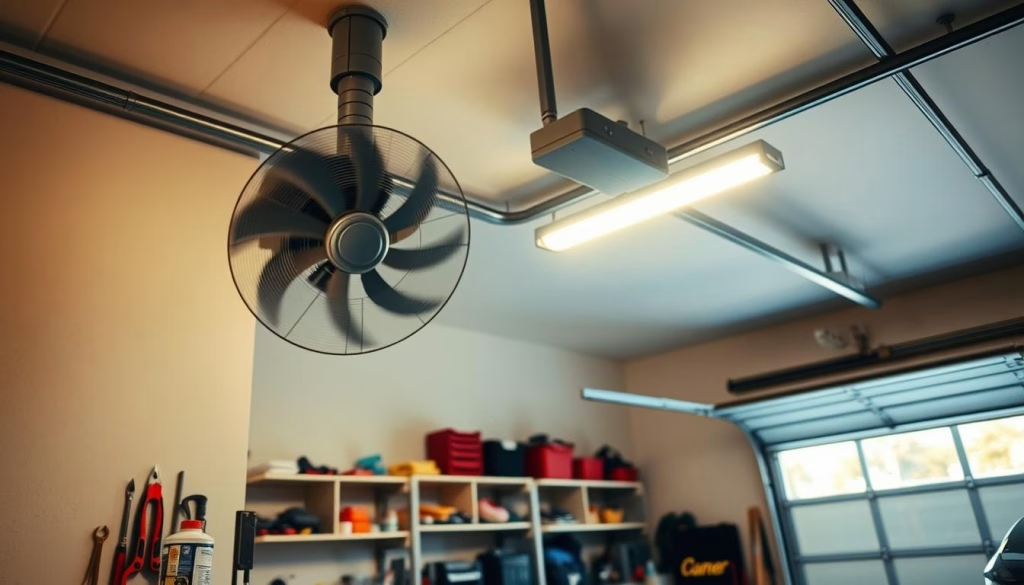
Place a box fan low at the open garage door so exhaust blows outward; gasoline vapors are heavier than air, so low exhaust works best. Add a second fan on the clean side that pulls fresh air in rather than just stirring fumes around.
Keep the interior door to the home mostly closed. Crack it only after you’ve established outward airflow so the home stays protected and vapors travel outside through the garage door.
Avoid heaters or anything with exposed elements during ventilation. Monitor the smell as you run fans; continuous outward airflow for a short time helps reduce concentration before deeper cleaning.
Cycle fans on and off after the initial venting and consider adding permanent vents if the garage often traps vapors. These small tips save time and lower risk when you must handle spills or repairs.
How to get rid of gasoline smell in garage: step-by-step
Tackle spills with a simple routine that keeps safety first and limits lingering vapors.
Step 1: Ventilate. Open the main door and run a low fan blowing outward before any hands‑on cleaning begins.
Step 2: For a fresh spill, cover the wet area with cat litter or oil‑dry absorbent. Press lightly, wait a short time, then sweep the granules into a heavy bag and place that outside.
Step 3: Mix warm water with a degreaser such as Simple Green or dish soap. Scrub the stain thoroughly and rinse. Repeat until the scent and visible residue drop.
Step 4: Sprinkle baking soda on damp concrete and let it sit. For tough spots, make a paste of baking soda and water, scrub, then rinse and dry.
Step 5: Set out trays of baking soda or activated charcoal and keep the door closed to the house during cleaning. Launder contaminated mats and air‑dry them outdoors. Run fans until everything is fully dry, then recheck the car and containers if odor returns.
Prevent gas smells from returning: storage, ventilation, and smart habits
A tidy space and steady habits stop most odors before they start. Keep fuel in certified gas cans with tight caps on a low, ventilated shelf away from furnaces, water heaters, and direct sun.
Limit paints, solvents, and propane tanks in the garage. If you must keep these items, seal them well and store them apart from ignition sources.
Ventilate regularly by opening the main door on maintenance days. Consider passive vents, a small exhaust fan, or a dehumidifier to lower moisture and prevent trapped odors.
Place trays of activated charcoal or baking soda in still corners and refresh monthly. Wipe drips from lawn engines and schedule checks for gaskets and lines so slow leaks don’t go unnoticed.
Keep absorbents and labeled bins with rags handy; air‑dry any fuel‑exposed rags outdoors and discard them safely. Test smoke and carbon monoxide detectors near the home entrance.
Inspect garage door seals and the door system for gaps or damage and book repair services when weatherstripping or alignment fails. Small upgrades and routine checks keep the space safer and smelling neutral.
When to call in garage door and safety pros
When odors linger after cleaning and airing out the space, it’s time to consider professional help. Persistent scent for many hours can mean an active leak or soaked material you cannot reach safely.
Check vehicles, cans, and small engines first. If you still notice gas and the source is unclear, call a qualified technician rather than guessing at repairs.
Request a full garage door inspection if you see gaps, damaged seals, or misalignment. A faulty door or system can let fumes enter the home and limit effective ventilation.
Ask for both repair and safety checks. Good pros will evaluate the opener, hardware, detectors, lighting, and walkways and point out the difference between a surface spill and a hidden leak.
If odors return after repeated cleaning, schedule services that can find trapped fuel behind walls, under cabinets, or deep in porous concrete. For residential and commercial inspections, repairs, and custom installations, contact Robert’s Garage Door Professionals at 773-906-1556 or book online.
When in doubt, step outside, keep the area ventilated, and bring in qualified help rather than risk exposure or fire hazards.
Conclusion
Pairing strong airflow with smart cleanup is the simplest route back to a neutral garage.
Vent low and push contaminated air out, use cat litter for fresh spills, then scrub stains with soap or a degreaser. Place baking soda or charcoal trays to pull lingering odor from concrete. Keep the interior door closed while airing so the home stays protected.
Most spaces clear in hours when you act quickly and follow safe habits. Store fuel properly, check tanks and lines, and refresh absorbents as needed.
If scents return or you suspect a leak, call a pro for an inspection and repair. Contact Robert’s Garage Door Professionals at 773-906-1556 for garage door checks and guidance.

